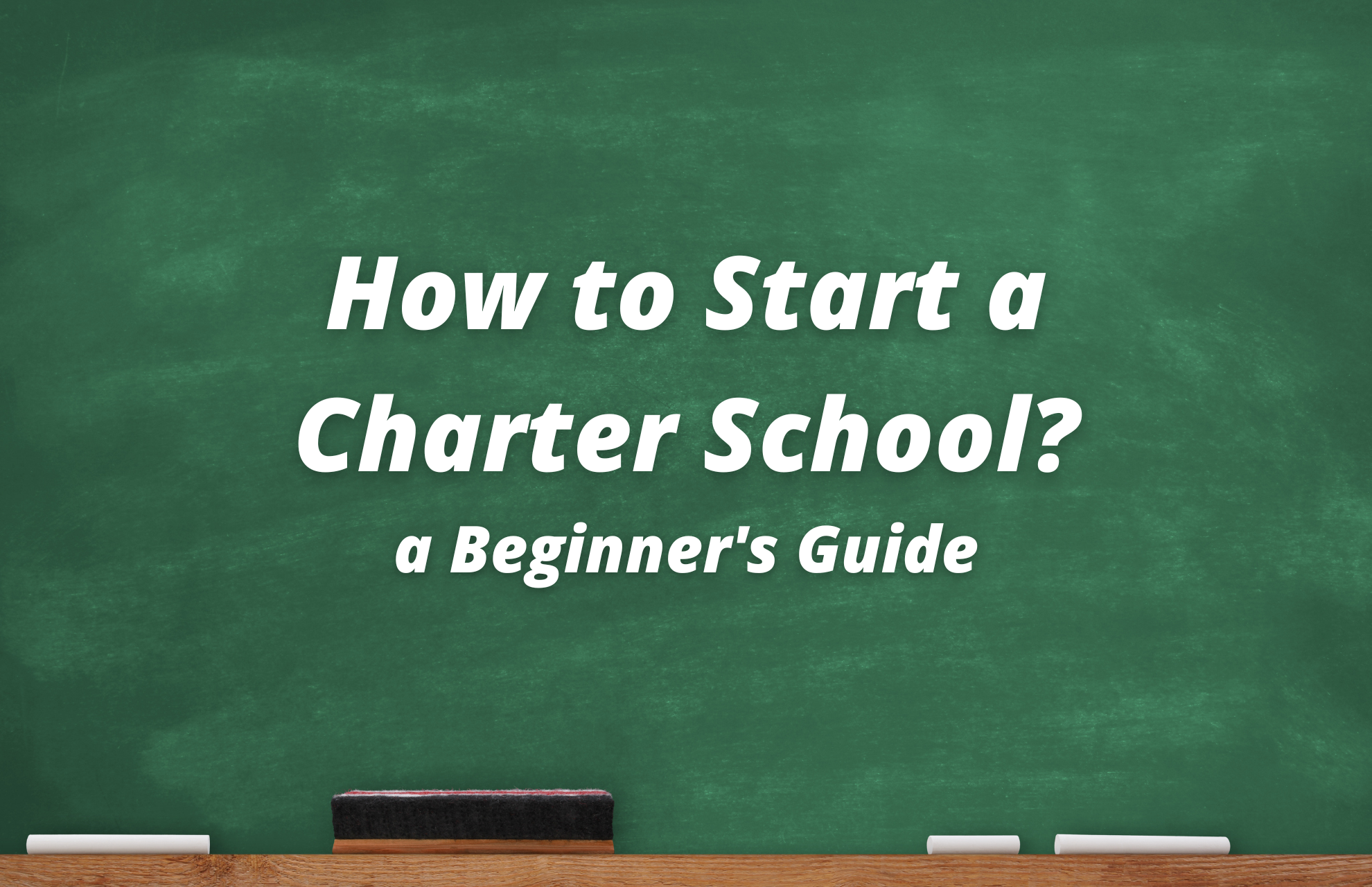
How to Start a Charter School? a Beginner’s Guide
A comprehensive guide to starting a charter school can be found here.
An increasingly common academic choice is charter schools. 7.2% of all public school students attended a charter school in the 2019–2020 academic year, up from just 3% in 2009.
This alternative public school approach is now receiving more attention from school administrators, teachers, and school boards. But what precisely happens during the charter school establishment process? How does the planning seem to be going?
Continue reading to find out more about how to launch a charter school.
Related: Pros and Cons of Charter Schools
Getting Started
The public school system offers communities a variety of educational options for students, and charter schools offer students cutting-edge methods of teaching and learning. While operating independently from the local school district, charter schools are still required to adhere to and meet local and state academic standards.
The states in which they operate provide public funding for them, and they are subject to ongoing performance reviews. Here’s what to look into at the state level as you get started:
Check the Legality of Charter Schools in Your State
Each state has legislation governing the legality of opening and running a charter school because charter schools are funded by the states in which they are located. First, find out if charter schools are allowed in your state.

The majority of states have passed legislation allowing charter schools to operate as of January 2016 as well as the District of Columbia. States in the United States. that do not currently permit charter schools to include:
- Kentucky
- Montana
- Nebraska
- North Dakota
Check for Capacity Limits
The number of charter schools that may operate in each state that does permit them is frequently capped. Depending on where you live, you may be ineligible to open a charter school due to capacity limits, even if charter schools are generally allowed in your state.
The states which currently do not have caps in place are:
- Alaska
- Arizona
- Colorado
- Delaware
- Florida
- Georgia
- Hawaii
- Indiana
- Iowa
- Kansas
- Louisiana
- Maryland
- Minnesota
- Nevada
- New Jersey
- North Carolina
- Oregon
- South Carolina
- Tennessee
- Virginia
- Wyoming
There might be restrictions on how many charter schools can legally operate in your state if it isn’t on the list. It’s still possible that your state hasn’t used all of its resources, though. To find out if you can start a charter school in your area, look up the charter school laws in your state online.
Determine If New Schools Are Allowed

Some states have laws that place restrictions on the kinds of charter schools that are allowed in addition to the number of charter schools that are allowed. Therefore, there might be limitations on brand-new start-up schools, public school conversions, and/or online schools.
Visit Your State’s Department of Education Website
Knowing the specific rules, deadlines, and guidelines that apply in your state is essential because state-by-state variations in charter school laws necessitate this. Unfortunately, there isn’t a single compendium, so you’ll need to find out which forms, applications, and deadlines are necessary for your state.
Tips:
- You can perform a web search for the website of the state’s department of education or for the steps involved in applying for charter schools in your state.
- Pay close attention to all deadlines that apply because they probably differ for charter schools in your state.
- Learn everything there is to know about the charter school laws in your state. Some state demand that applicants demonstrate a working understanding of the goals, purposes, and legal requirements of their state.
Planning the Charter School
You should take your time planning the procedure once you’ve determined that you can establish a charter school in your state. Consider the following factors as you plan your charter school.
Level of Commitment
A charter school’s establishment is not simple. It might consume a significant amount of your time—months, maybe even years—as well as your energy. Make sure you have the time, ability, and resources to complete the project before you start organizing and launching a charter school.

To make the charter school a reality, you’ll probably need a sizable team of driven individuals. Can you locate a team with all the necessary expertise in finance, operations management, real estate, and education?
Concept & Mission Statement
Identify a vision and a mission for your charter school. The goal of charter schools is frequently to offer the neighborhood new educational opportunities. What are the gaps in your community, and how can you close them?
You may be interested in
Take a look at what the state’s public school curriculum could or ought to teach, but doesn’t. Consider how you can satisfy state education requirements while enhancing a student’s academic experience even further.
Utilize your concept once you have it under control to develop your mission statement. You’ll need a way to communicate your vision to different stakeholders, including those who will support and attend the school.
Your school’s mission statement will outline the goals and objectives of the institution as well as its purpose. Just one or two sentences should be sufficient. It must be concise and clear. When drafting your mission statement, ask yourself what the ideal public school experience would entail.
Board of Directors
You must first assemble a board of directors before you can start creating the specific. The school’s board will assist in choosing, vetting, and developing policies. Their main job is to run the school. Who will be on this board, and how will it operate?
The people selected for the board should be aware of the mission statement and incorporate it into how the school runs. A board typically consists of five or more people, each of whom brings a unique set of skills to the table.
Take into account your advantages and disadvantages. Make sure that the board utilizes your strengths and that others with expertise in those areas balance out your weaknesses.

Charter School Budget
Then, you should work with the members of the team’s governing board to develop a budget for your school. Come up with ideas for how you will raise and distribute money by drawing on the board members’ expertise in finance.
While creating your budget, remember your mission statement. Ask yourself if the way you intend to use resources is consistent with the mission statement. Consider how you intend to use resources.
Create a realistic budget proposal for the operation of your school by working with a financial planner or accountant. You should have a long-term budget plan that covers the first five years of operation in addition to a first-year budget proposal.
For every operating year, make cash-flow projections, and have your board review them.
Charter School Location
You should give careful consideration to where you want to run your charter school. Finding a location and signing a lease is less important than making a strategic investment in your charter school. Find areas in a convenient location that will appeal to both students and their parents.
Be flexible with different kinds of properties. It might be ideal to house your charter school in an old school, but these buildings are hard to come by. For some charter schools, repurposing spaces or building multipurpose facilities may be the best choice.
Application
The creation of your application is the last, but undoubtedly one of the most significant, steps in the planning process. It’s comparable to a business using a business plan to submit an application for a charter school. Research is necessary, and it could be hundreds of pages long.
The school’s vision and mission, which you created in earlier steps, should be included in your application. It should also include information about the academic program, hiring procedures, and communication strategy for the school.

You might want to speak with other charter schools or authorizers before drafting your application. They can help you gain an understanding of what makes a charter school effective.
Starting the Charter School
You can take action once you have completed your research and planning. Before you start accepting enrollment, you’ll need the state’s decision-makers approval. The procedure for establishing your charter school is outlined below.
Draft and Submit a Letter of Intent
Depending on your state’s guidelines and requirements, you may need to write and submit a letter of intent. Your local school district, the department of education in your state, or the office for charter schools in your state (if one exists) may all require you to submit your materials.
The letter of intent should describe the preliminary planning and design work you’ve done and list the board members you’ve selected to find and run your proposed charter school. A successful charter school letter of intent should include, but may not be limited to:
- Applicant information
- Founding group/board of directors, along with each individual’s role and qualifications
- Proposal history (if relevant)
- The name of your proposed charter school
- The prospective location – not the address, but simply the school district your charter will fall in, and any specific neighborhood(s) you’ve identified as a promising location
- Planned grades and estimated enrollment
- Any partner organizations you’ve lined up
- Your school’s mission statement
- An overview of how your school will live up to its mission statement
- The target population you hope your school will appeal to
- Diversity initiatives for your charter school
- Public outreach initiatives and community support for your proposed charter school

Wait for Approval
Once your materials are submitted, you’ll need to wait for authorization to proceed with your school. Most charter schools are authorized by the local school district, but if the school district denies your application you can appeal that decision to the county, and then to the state.
Common reasons for a denied application include:
- an unsound educational program
- a concern over the petitioners’ inability to successfully implement the school program they’ve designed
- a failure to address the conditions or guidelines set out for charter schools in your town, county, or state
- a failure to meet the educational requirements of schools in your district, county, or state
Hire Faculty and Staff
If your charter school is approved, you’ll need teachers, administrators, and facility managers. Consider former students from alternative teaching programs like Teach for America, or search online job boards.
You should make sure to hire qualified individuals who are enthusiastic about the mission of your school, just as you would with board members. Here are some best practices when hiring teachers:
- During the interview process, have potential teachers demonstrate how to teach a lesson. This will give you a clear picture of the applicant’s actual performance in the classroom.
- Make sure to check up on all professional references and pay close attention to each candidate’s employment history. Look for any dismissals and learn the reason the applicant lost their job.
- Find out if each person has a public social media account by performing a simple internet search. You could learn more about the applicant’s character and morals from this.
- Create a background investigation in cooperation with the local police.
- The majority of newly established charter schools have a high turnover rate. Do not wait five years to find a new teacher if the one you have hired isn’t working out. In a similar vein, don’t take it personally if your teachers leave after a year or two. Be prepared for employee and employer turnover.

Open for Enrollment
You can start taking enrollment after receiving operational approval and appointing a capable faculty and staff. Always keep your charter school’s mission statement at the forefront of all operations and keep in mind that you might be bound by certain regulations, including those relating to class size.
If you need help with enrollment marketing, consider partnering with experienced charter school marketers to support you.
Monitor Progress at All Levels
As you grow, you’ll want to monitor the progress of your school. Working with an organization like Measures of Academic Progress (MAP) is a popular choice among educational boards.
A personalized evaluation of your school’s ranking, your student’s progress, and their potential for growth can be given to you by MAP, which regularly evaluates schools across the country.
These results are often delivered within 24 hours, allowing you to keep on top of your educators’ effectiveness and your student’s learning progress.
Conclusion: Start a Charter School
Charter schools are independent public schools that operate with more flexibility than traditional public schools. They have become increasingly popular in recent years due to their ability to provide unique educational opportunities and promote innovation in the education sector.
Starting a charter school can be a challenging process, but it can also be very rewarding. With careful planning and hard work, you can create a school that provides unique educational opportunities and helps to shape the future of education.
FAQs
Do Charter Schools Require a License?
Traditional public school and Horace Mann charter school administrators must possess an appropriate Massachusetts administrator license for the role. Despite not needing a license, administrators of Commonwealth charter schools must be capable of handling all responsibilities.
What is the Best State to Open a Charter School?
According to the official NAPCS report, the top ten charter law states are as follows: Minnesota, Florida, Massachusetts, Colorado, New York, California, Georgia, the District of Columbia, Louisiana, and Utah.
How Do I Become a Charter School in CA?
A public school called a charter can offer instruction to students in any combination of grades, from kindergarten through grade twelve. Parents, teachers, or community members may initiate a charter petition, which is typically presented to and approved by a local school district governing board.


